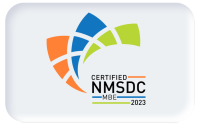In life everyone wants to be a hero. What better way to be a hero than to demonstratively show how YOU saved your organization money? (Also, it really helps when asking for a raise.)
People have been making “small world” decisions to save money since the advent of the office. I recall my first position in corporate America when we were advised to “save paperclips and rubber bands” and “reuse inter-office envelopes.” More recently, albeit decades ago, we only printed when necessary, and never in color to lower costs. Today, we don’t even use paperclips and rubber bands, and no one prints anything at all. So, looking for costs to cut gets a little more challenging.
Generally, the first stop is for the CFO to put pressure on department heads, and the next thing you know, the Keurig machine is missing from the breakroom. But the legal department gets special attention – all of those law firms, consultants, and eDiscovery vendors have expenditures that the marketing department just salivates over. But costs must be controlled, so the search begins for the least expensive professionals to get the job done.
Fast-forward a few weeks, and the idea arises that the organization will benefit by pushing down on eDiscovery costs – especially for identifying, collecting, and processing electronic data. The attitude that basically ALL eDiscovery vendors perform the same commodity-level of service takes root, and the RFI/ RFP processes commence.
The Problem: Minimal Service for Minimal Profit
It doesn’t take a nuclear physicist to understand that the first thing each company does in this process is to calculate how to offer MINIMAL SERVICE for MINIMAL PROFIT. Minimal service can be defined as service that reaches the point of annoying – but not infuriating – to the end-client, and hanging on as long as possible while on the vendor panel. HERE is where all hell starts to break loose.
We’ve all watched horror movies where there is that one guy who insists on checking out the upstairs rooms alone. We want to yell at the screen – “don’t open THAT door” – but inevitably, the door gets opened… ugh, how did they not see this coming?
I’ve unfortunately sat through this same horror film at least 16 times in the past year. But the antagonist is an eDiscovery project manager, and the protagonist is an unsuspecting counsel. The weapon: poor eDiscovery execution, and the blood: hyper-inflated invoices for document review.
Books have been written on the innumerable ways to properly perform collection, processing, and hosting of documents in preparation for document review. However, today’s eDiscovery vendors are not inclined to pull those books off of the shelves when their clients are crushing them on invoices. Instead of acting as consultants to their clients, sloppiness ensues and opportunities are missed. Suddenly, thousands, or tens of thousands, of documents are in a set that should have been removed EARLY in the process – now they are all being reviewed by attorneys that bill by the hour.
The Example: Spiraling Costs
The discovery of the problem takes many faces, but many times, the damage is already done. Most recently for me, it was the question of an attorney who thought she was seeing the same document over the course of several days. The question quickly spiraled into an email chain that spanned days and a rapidly increasing number of CC’d individuals on the thread as time moved forward. I didn’t count, but an email that started with around six people quickly accumulated to at least 20 more within days.
Time wasted, and money pouring out as everyone on the chain offered opinions. Then, the poor project manager, completely overwhelmed and prepared to lose his job, tried in vain to find a quick fix. But there was no quick fix. The documents were not processed correctly, and the process needed to be reversed to get things right.
Luckily, this attorney happened to catch the problem only two weeks into the review – but in the meantime, 12 other attorneys were each cross-reviewing other documents that should have been removed before review. What if the catch was never made? What if the review continued for two more weeks?
This was a simple example. Imagine if it was more complex, and there was sloppiness around TAR application…
The Solution: Find a Partner
Today’s eDiscovery world is far more complex than it was 20 years ago – when the mighty email reigned. Social and enterprise messaging services are quickly overtaking the uncomplicated email, and the challenges to eDiscovery vendors are greater than ever.
The first step in keeping document review costs controlled and predictable is working with a trusted, proven eDiscovery partner, not necessarily the one who will cut costs to offer MINIMAL SERVICE for MINIMAL PROFIT.
If your current eDiscovery vendor is not proving themselves to be a partner and an advocate on each and every matter – regardless of size and complexity – you may NEVER get that Keurig machine back.





